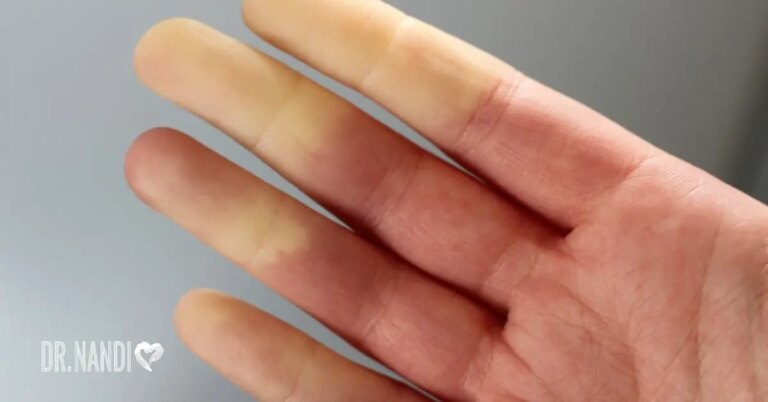In this era of digital connectivity, our reliance on a stable Wi-Fi signal transcends mere convenience; it has become a fundamental aspect of our daily lives. Whether we’re working from home, indulging in our favorite digital content, or staying connected with loved ones worldwide, Wi-Fi keeps us seamlessly linked to the digital realm.
Yet, amid our quest for uninterrupted internet experiences, there’s a facet that warrants consideration – the potential impact of Wi-Fi on our health. As a doctor committed to promoting healthy lifestyles, it’s imperative to explore how our constant connection to Wi-Fi may influence our well-being.
Wi-Fi Signals Unveiled: Beyond Connectivity
Contrary to popular belief, these signals are not in a perpetual state of activity. According to Kenneth Foster, an expert from the University of Pennsylvania, wireless routers spend the majority of their time in idle mode, only actively transmitting information a mere 0.1% of the time. This revelation challenges the conventional notion of constant data flow, offering a nuanced understanding of Wi-Fi dynamics.
Additionally, it’s crucial to grasp that the strength of the radiation we encounter diminishes significantly with distance. Foster draws an intriguing parallel, highlighting that our mobile phones transmit at a strength approximately 100 times more potent than Wi-Fi during a call. Despite this, there’s no significant evidence linking such exposure to adverse health effects.

Navigating Grey Areas: Low-Level Radiation Concerns
While the prevailing understanding suggests that standard Wi-Fi radiation levels pose minimal risks, concerns linger regarding the impact of low-intensity radiation emitted by wireless devices. Joel Moskowitz, director of the Center for Family and Community Health at the University of California, Berkeley, raises a cautionary flag. Animal studies indicate that even low-level exposures to radiowave radiation might harbor potential health effects.
The stakes are particularly high for vulnerable groups such as pregnant women and young children. Moskowitz points to potential risks like neurodevelopmental issues, cancer, and reproductive harm. Although these concerns are not conclusive and require further exploration, they underscore the importance of approaching our constant exposure to wireless technology with a measure of prudence.
Deciphering Research: What We Know and What We Don’t
The landscape of Wi-Fi’s potential impact on health becomes even more intricate when we examine current research findings. The World Health Organization, along with the International Agency for Research on Cancer, has classified mobile phones as a “possible carcinogen.”
Recent rodent studies have added a layer of complexity, suggesting that heavy exposure to cell phone radiation may increase the risks of brain and heart tumors in rats.
Furthermore, other research links elevated levels of Wi-Fi and cell phone exposure to hormonal shifts and oxidative stress, raising concerns about their potential role in promoting cancer or brain diseases.
It’s crucial to acknowledge that while these findings are noteworthy, many animal studies lack consistency in design quality, and the translation of results to humans remains uncertain. Most concerning experiments involved rodents exposed to significantly higher radiation levels than typical human exposure during mobile phone use or wireless network connection.

7 Common Objects That Can Hinder Your Wi-Fi and Health
As we navigate the complexities of Wi-Fi and health, it’s crucial to recognize that seemingly innocent everyday objects might subtly interfere with both our Wi-Fi signals and potentially impact our well-being. Let’s unravel these unsuspecting disruptors:
1. Microwaves
Wi-Fi Impact: The electromagnetic waves emitted by microwaves, particularly around the 2.4GHz frequency, can clash with the same frequency used by many Wi-Fi routers, causing disruptions.
Health Implications: While microwaves are designed to contain radiation, damaged doors might leak a bit. Standing a few feet away during operation is a precautionary measure.
2. Cordless Phones
Wi-Fi Impact: Older cordless phones operating on the 2.4GHz frequency can potentially interfere with Wi-Fi signals.
Health Implications: These phones emit low-level radiation. Reducing direct exposure by using speaker mode or holding the device away from the ear is advisable.
3. Bluetooth Devices
Wi-Fi Impact: When multiple Bluetooth devices are active near a Wi-Fi router, interference may occur, affecting Wi-Fi speeds.
Health Implications: Similar to Wi-Fi, Bluetooth devices emit low-level non-ionizing radiation. Ongoing debates surround the long-term effects, especially for devices used close to the body.
4. Mirrors
Wi-Fi Impact: Large mirrors can reflect Wi-Fi signals, causing unpredictable signal bouncing and potential signal quality reduction.
Health Implications: No direct health risk, but caution is advised when hanging or moving large mirrors to prevent physical injuries.
5. Fish Tanks
Wi-Fi Impact: Water can absorb Wi-Fi signals, potentially weakening the signal if the router is near a large fish tank.
Health Implications: Ensure the tank’s electrical components are safely set up to avoid electrical mishaps, prioritizing the well-being of your aquatic friends.
6. Electronic Devices
Wi-Fi Impact: Various electronic devices, especially older or malfunctioning ones, can cause electromagnetic interference.
Health Implications: Prolonged screen time can strain eyes, disrupt sleep, and contribute to sedentary lifestyles. Taking breaks and maintaining device health is essential.
7. Fluorescent Lights
Wi-Fi Impact: Some fluorescent lights, particularly older models, can emit electromagnetic interference, conflicting with Wi-Fi signals.
Health Implications: While not directly related to Wi-Fi, these lights may cause headaches or eye strain. Opting for LED lights is a health-friendly and energy-efficient alternative.
Signs and Symptoms: Navigating Potential Impacts on Health
In our exploration of the intricate relationship between Wi-Fi and health, it’s essential to discuss potential signs and symptoms associated with excessive exposure to Wi-Fi radiation. While many individuals may not experience any adverse effects, some may be more sensitive to electromagnetic radiation. It’s crucial to be aware of possible indicators, which may include:
- Headaches: Some individuals may experience headaches as a potential symptom of excessive Wi-Fi exposure.
- Fatigue: Persistent fatigue could be another signal that warrants attention regarding Wi-Fi radiation sensitivity.
- Sleep Disturbances: Difficulty falling asleep or disrupted sleep patterns may be associated with prolonged exposure to Wi-Fi signals.
- Difficulty Concentrating: Reduced ability to concentrate or mental fog might be observed in individuals sensitive to electromagnetic radiation.
- Skin Rashes: Although less common, skin rashes could be a potential manifestation of sensitivity to Wi-Fi radiation.
While these symptoms can be indicative, it’s crucial to note that they can have various causes, and their occurrence doesn’t necessarily confirm Wi-Fi radiation exposure. If individuals are concerned about potential health effects, it’s recommended to consult with a healthcare professional. A professional assessment can provide clarity, guidance, and support tailored to individual circumstances.
My Personal RX on Navigating Technology and Health
In the age of digital ubiquity, it’s paramount to recognize the profound impact technology has on our daily lives and health. From prolonged screen exposure to potential radiation emissions, the digital landscape requires mindful navigation. As a physician, I advocate for a balanced approach that harnesses the benefits of technology while prioritizing our well-being.
- Limit Screen Time: Set boundaries for screen use, especially before bedtime, to mitigate potential disruptions to sleep patterns.
- Invest in Blue Light Protection: Consider blue light filtering glasses or screen protectors to minimize eye strain and potential sleep disturbances caused by prolonged exposure to electronic devices.
- Prioritize Outdoor Time: Regularly disconnect from screens and embrace outdoor activities. Exposure to natural light not only benefits your mood but also helps regulate sleep-wake cycles.
- Supplement Smartly: Ensure sufficient vitamin K intake by incorporating Vitamin K2 with D3 supplements into your routine. Beyond bone health, vitamin K plays a role in reducing dementia risk.
- Mindful Posture: Pay attention to your posture while using devices. Maintaining ergonomic positions can mitigate musculoskeletal issues associated with prolonged screen use.
- Educate Yourself: Dive into the insights from my Protocol. It’s more than a guide—it’s a transformative journey toward holistic health, offering comprehensive strategies for living your best life.
- Establish Tech-Free Zones: Designate certain areas in your home as tech-free zones, fostering better interpersonal connections and mental well-being.
In the digital era, achieving harmony between technology and health is not just desirable but essential. By adopting these practices, we can embrace the advantages of technology without compromising our physical and mental well-being.
Sources:
- Foster, K. R., Ziskin, M. C., & Balzano, Q. (2022). Three quarters of a century of research on RF Exposure Assessment and Dosimetry—What have we learned? International Journal of Environmental Research and Public Health, 19(4), 2067. https://doi.org/10.3390/ijerph19042067
- Heid, M. (2021b, April 29). You asked: Should I worry about Wi-Fi radiation? Time. https://time.com/4508432/what-is-wifi-radiation-cancer/
- Recent research on WiFi effects. (n.d.). https://www.saferemr.com/2015/09/recent-research-on-wifi-effects.html
- Yüksel, M., Nazıroğlu, M., & Özkaya, M. O. (2015). Long-term exposure to electromagnetic radiation from mobile phones and Wi-Fi devices decreases plasma prolactin, progesterone, and estrogen levels but increases uterine oxidative stress in pregnant rats and their offspring. Endocrine, 52(2), 352–362. https://doi.org/10.1007/s12020-015-0795-3
- Is there a syndrome caused by radiofrequency electromagnetic fields? (n.d.). https://journal.nzma.org.nz/journal-articles/is-there-a-syndrome-caused-by-radiofrequency-electromagnetic-fields





















